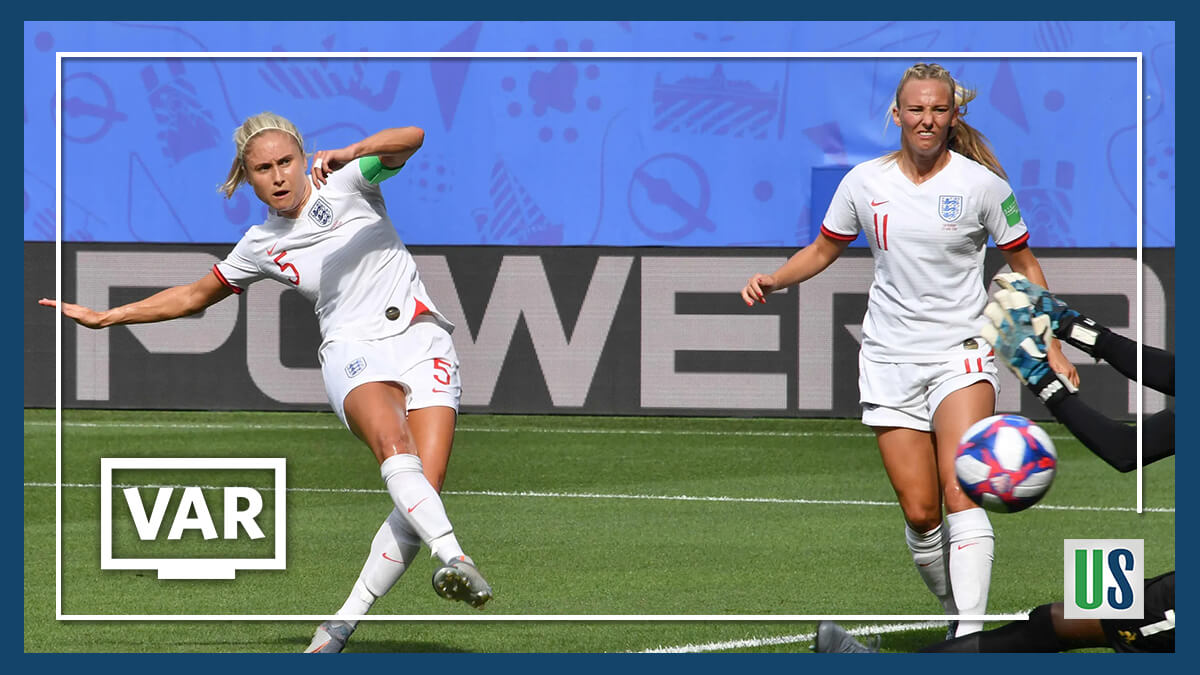The World Cup VAR is the Main Focus of Controversy
Yet again the VAR (Video Assistant Referee) is the controversial topic of the day in this Women’s World Cup. And once again it also goes against the Nigeria Super Falcons. In today’s Germany vs Nigeria match, VAR was utilized twice in favor of Germany. Germany gained two early goals, one from a penalty kick. Nigeria fans, as any fan would, are extremely upset with the VAR. The World Cup VAR also helped reverse a handball penalty kick for Australia. Both Nigeria or Australia were eliminated in these matches. Because of these decisions, many are calling for its removal. But, is World Cup VAR really ruining the beloved game?
World Cup VAR Introduced in 2018
Although the VAR system still seems new, it was used at the last World Cup. The 2018 FIFA World Cup became the first installation of the Video Assistant Referee in World Cup matches. It immediately changed things. 29 penalty kicks were awarded, 13 more than the 2014 World Cup. Though it may seem like awarding 13 more penalties clearly disrupts play and destroys the integrity of the game, the opposite is true.
For nearly a century, soccer fans, coaches and athletes alike had to deal with poor referee decisions (or non-decisions) in World Cup matches.
Instead of pretending that we can have perfect referees, the VAR system actually deals with reality. Referees are fallible. They make mistakes. For that reason, the World Cup VAR allows reviews to four key mistake-prone areas:
- Goals
- Penalties
- Direct red cards
- Mistaken Identity
VAR Controversy at the 2019 Women’s World Cup
Stop-Motion
Lifelong fans of soccer continue to hammer on the fluidity of the game. Soccer is supposed to play in near-perpetual motion and the World Cup VAR changes that. This is completely true. There are times where the referee and VAR take minutes to review a missed-penalty. Players are standing and fans are waiting. This pain is completely understandable. The beauty of soccer is constant motion for 45 minutes.
Making Goalkeeping More Difficult
So far in the Women’s World Cup, three penalty kicks were retaken due to goalie encroachment. In each of the cases, the World Cup VAR aided in these decisions. As most soccer players and fans know, goalie encroachment has been treated similar to traveling in the NBA. Only the worst cases of encroachment are called. But, with recent law changes to FIFA just prior to the Women’s World Cup, the federation wanted to eliminate goalie encroachment at all costs. With the use of a VAR, super-slow motion makes even the slightest encroachment much bigger than it appears to the naked eye.
Additionally, the law requires that referees caution the goalkeeper. So, not only are the save/miss taken away, but they get a yellow card, too. Fortunately, FIFA decided to make a mid-tournament change to take away the yellow card stipulation. The World Cup VAR and retaking penalty kicks are already deterrent enough.
Growing Pains and Misguided Blame on the VAR

As usual, fans are slow adapting to change and quick to anger. Changes to any sport come with controversy. Those new laws negatively impact teams when they are first introduced. That can be devastating to fans. Especially on the biggest stage in the world. But the World Cup VAR is not entirely to blame.
Remember that it is ultimately up to the head referee. The World Cup VAR can suggest moments to review or calls to overturn, but they do not make decisions from the booth. This should further illuminate the need for the video assist. Referees are not perfect and they will make mistakes. These mistakes are magnified on the global scale. Without the VAR, these errors would be unstoppable. Now, for the first years in soccer’s history, honesty and fairness can be upheld even when the referee initially misses it. It’s time to get over the growing pains and understand the blessing the VAR is now and for future generations of soccer.


